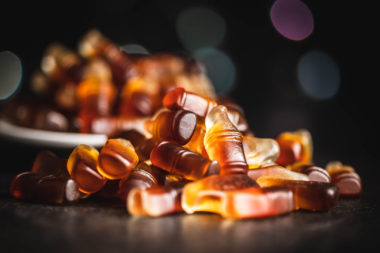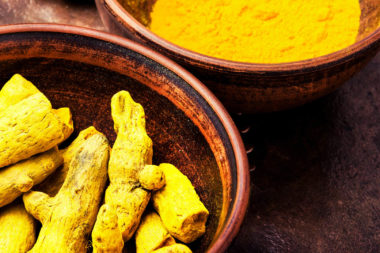

The manual treatment to improve lymphatic flow and facilitate for patients with pneumonia and other inflammations.
The main purpose of this report is to provide an overview of research studies on how manual and osteopathic treatment affects lymphatic flow and leukocyte flow, which can strengthen the immune system and facilitate the healing of infections and inflammations, particularly pneumonia. Additionally, it has been found that vibrations affect flow and that the flow in the fascia, in turn, affects cells and nuclei that are influenced by tensile forces, which has been shown to reduce inflammation and stimulate healing.
Older individuals and those with weakened immune systems are particularly susceptible to developing pneumonia. Symptoms usually include fever, cough, difficulty breathing, rapid and shallow breathing, elevated heart rate, production of phlegm, chest pain during deep breathing and coughing, and sometimes nausea, vomiting, diarrhea, and fatigue (Haessler & Schimmel, 2012). Clinical examination shows reduced sound on percussion and wheezing sounds upon auscultation of the affected lung. Laboratory tests show elevated levels of leukocytes, as well as immature neutrophils and elevated levels of CRP in addition to an increased sedimentation rate (Haessler & Schimmel, 2012; Honda et al, 2016). X-rays can detect inflammatory streaks in the affected lung lobes.
A central idea behind osteopathic treatment is that improved lymphatic drainage clears the interstitial tissue of blood cells, exudate, tissue particles, toxins, bacteria, etc., which could cause inflammation and disease in the fascia (Degenhardt & Kuchera, 1996; Seffinger et al, 2003; Wallace et al, 2003). Given the importance of lymphatic flow in maintaining homeostasis and improving an individual’s immunity, manual techniques to increase lymphatic flow should be a good strategy for treating infections and inflammation.
Supporting this, studies have shown that osteopathic methods increase vaccine-specific antibodies (Jackson et al, 1998; Measel, 1982) and reduce the risk of lower respiratory tract infection (Allen & Pence, 1967; Kline, 1965). Osteopathic manual treatment to relieve lung tissue, in combination with antibiotics, has been shown to reduce mortality and shorten hospital stays for elderly patients with pneumonia compared to those who received antibiotics alone. The manual treatment also reduced intravenous antibiotic use (Noll et al, 2000; Noll et al, 2010; Licciardone et al, 2012).
There are many manual therapies intended to increase lymphatic flow, and lymphatic pump techniques have experimentally been shown to be effective (Hodge et al, 2007; Hodge et al, 2010; Hodge & Downey, 2011; Hodge, 2012; Huff et al, 2010; Knott et al, 2005; Prajapti et al, 2010). In the USA, lymphatic pump technique is used clinically to treat heart failure, gastrointestinal problems, respiratory tract infections, and edema. The lymphatic pump technique can be performed on the feet and legs (pedal pump), chest (thoracic pump), abdomen (abdominal pump), as well as areas over the spleen and liver (Wallace et al, 2003). Given the volume of lymph in the abdomen (Mann & Higgins, 1950; Morris, 1956; Pabst & Binns, 1981; Smith & Ford, 1983), compression and stimulation of the intestinal folds and visceral tissue should be a successful strategy for releasing large amounts of lymph and starting flow.
Osteopathic manual therapy has, for almost 100 years, successfully used lymphatic pump techniques to improve the immune system in patients with infectious and lung diseases. Interestingly, it is only in recent years that research has begun to investigate the mechanism behind these results. The lymphatic pump technique is manually performed by applying pressure medially and cranially under the last rib towards the diaphragm. One pressure per second, bilaterally, for eight minutes, repeated every other hour, which has been shown to significantly increase the flow of all types of leukocytes in the lymph in experiments with dogs (Hodge et al., 2007). The lymphatic pump technique resulted in a significant increase in lymph in the thoracic duct, the largest lymph vessel in the chest that then empties into the bloodstream. There was also a significant increase in various leukocytes, such as macrophages, neutrophils, T-cells, and B-cells. This effect is likely one of the mechanisms behind the improved immune system and increased recovery rate in patients treated with the lymphatic pump technique.
Previous studies of lymphatic flow have shown that the outflow of lymphocytes from the intestinal lymphatic vessels was essentially the same as the flow in the thoracic duct (Mann & Higgins, 1950; Morris, 1956; Pabst & Binns, 1981; Smith & Ford, 1983), indicating that lymphocytes in the thoracic duct are collected from the intestinal lymphatic system. Rhythmic compressions of the abdomen affect the lymphoid tissue in the gastrointestinal tract, which can facilitate the release of leukocytes from the tissue into the lymphatic flow. This has also been shown in experiments with dogs and rats, where lymphatic flow and the amount of various leukocytes (neutrophils, monocytes, T-cells, B-cells) increased significantly (Hodge et al., 2010; Huff et al., 2010).
During infections, edema and other inflammatory conditions, inflammatory processes occur and chemokines, inflammatory mediators, and free radicals are formed in the tissue and released into the blood and lymphatic system (Olzewski, 2003; Swartz, 2001). Manual therapy that drains the fascia of these factors can reduce pain and facilitate healing. Osteopathic treatment has been shown to alter cytokine levels in the serum of both healthy and sick individuals (Walkowski et al, 2014; Licciardone et al, 2012). Lymphatic pumping technique has been shown, in experiments with dogs, to significantly increase the flow of inflammatory mediators in lymph and should provide a scientific basis for manual techniques to increase immunity and improve the treatment of infections (Schander et al, 2012).
Lymphatic pumping technique has also been shown to reduce bacterial load in the lungs of rats with acute lung inflammation, although the mechanism behind this is not fully understood (Hodge, 2012; Huff et al, 2010). Treatment with deep vibrations around the lungs can therefore be assumed to stimulate breathing and facilitate the release of phlegm so that coughing is facilitated. The treatment is very pleasant and stimulates the flow in the connective tissue, which reduces pressure in the tissue, increases diffusion, and improves circulation and lymphatic flow. Improved lymphatic flow improves the immune system.
- Allen T.W. and Pence T.K. The use of the thoracic pump in treatment of lower respiratory tract disease. J Am Osteopath Assoc. 1967, 67:408-411.
- Degenhardt B.F. and Kuchera M.L. Update on osteopathic medical concepts and the lymphatic system. J Am Osteopath Assoc. 1996, 96:97-100.
- Hodge L.M., King H.H., Williams A.G., Reders S.J., Belavadi T.J., Simecka J.W., Stoll S.T. and Downey H.F. Abdominal lymphatic pump treatment increases leukocyte count and flux in thoracic duct lymph. Lymphat Res Biol. 2007, 5:127-132.
- Hodge L.M., Bearden M.K., Schander A., Huff J.B., Williams A.Jr., King H.H. and Downey H.F. Abdominal lymphatic pump treatment mobilizes leukocytes from the gastrointestinal associated lymphoid tissue into lymph. Lymphat Res Biol. 2010, 8:103-110 Hodge L.M. and Downey H.F. Lymphatic pump treatment enhances the lymphatic and immune systems. Exp Biol Med. 2011, 236:1109-1115.
- Hodge L.M. Osteopathic lymphatic pump techniques to enhance immunity and treat pneumonia. Int J Osteopath Med. 2012, 15:13-21.
- Huff J.B., Schander A., Downey H.F. and Hodge L.M. Lymphatic pump treatment augments lymphatic flux of lymphocytes in rats. Lymphat Res Biol. 2010, 8:183-187.
- Jackson K.M., Steele T.F., Dugan E.P., Kukulka G., Blue W. and Roberts A. Effect of lymphatic and splenic pump techniques on the antibody response to Hepatitis B vaccine: a pilot study
- Kline C.A. Osteopathic manipulative therapy, antibiotics and supportive therapy in respiratory infections in children: comparative study. J Am Osteopath Assoc. 1965, 65:278-281.
- Knott E.M., Tune J.D., Stoll S.T. and Downey H.F. Increased lymphatic flow in the thoracic duct during manipulative intervention. J Am Osteopath Assoc. 2005, 105:447-456.
- Licciardone J.C., Kearns C.M., Hodge L.M. and Bergamini M.V. Associations of cytokine concentrations with key osteopathic lesions and clinical outcomes in patients with nonspecific chronic low back pain: results from the osteopathic Trial. J Am Osteopath Assoc. 2012, 112:596-605.
- Mann J.D. and Higgins G.M. Lymphocytes in thoracic duct intestinal and hepatic lymph. Blood. 1950, 5:177-190.
- Measel J.W. Jr. The effect of lymphatic pump on the immune response: preliminary studies on the antibody response to pneumococcal polysaccharide assayed by bacterial agglutination and passive hemagglutination. J Am Osteopath Assoc. 1982, 82:28-31.
- Morris B. The hepatic and intestinal contributions to the thoracic duct lymph. Q J Exp Physiol Cogn Med Sci. 1956, 41:318-325.
- Noll D.R., Degenhardt B.F., Morely T.F., Blais F.X., Hortos K.A., Hensel K., Johnson J.C., Pasta D.J., Stoll T. Efficasy of osteopathic manipulation as an adjunctive therapy for hospitalizedpatients with pneumonia: a randomized controlled trial. Osteopath Med Prim Care. 2010; 4:2.
- Noll D.R., Shores J.H., Gamber R.G., Herron K.M. and Swift J. Jr. Benefits of osteopathic manipulative treatment for hospitalized elderly patients with pneumonia. J Am Osteopath Assoc. 2000, 100:776-782.
- Olszewski W.L. The lymphatic system in body homeostasis: physiological conditions. Lymphat Res Biol. 2003, 1:11-21.
- Pabst R. and Binns R.M. In vivo labeling of the spleen and mesenteric lymph nodes with fluorescein isothiocyanate for lymphocyte migration studies. Immunology. 1981, 44:321-329.
- Prajapti P., Shah P., King H.H., Williams A.Jr., Desai P. and Downey H.F. Lymphatic pump treatment increases thoracic duct lymph flow in conscious dogs with edema due to constriction of the inferior vena cava. Lymphat Res Biol. 2010, 8:149-154.
- Seffinger M.A., King H.H., Ward R.C., Jones J.M. III, and Rogers F.J. Osteopathic philosophy. In: R.C. Ward ed. Foundations for Osteopathic Medicine, 2nd ed. Philadelphia, PA:Lippincott Williams & Wilkins; 2003:3-12.
- Smith M.e. and Ford W.L. The recirculating lymphocytes pool of the rat: a systematic description of the migratory behaviour of recirculating lymphocytes. Immunology. 1983. 49:83-94.
- Swartz M.A. The physiology of the lymphatic system. Adv Drug Deliv Rev. 2001, 50:3-20.
- Walkowski S., Sing M., Puertas J., Pate M., Goodrum K. and Benencia F. Osteopathic manipulative therapy induces early plasma cytokine release and mobilization of a population of blood dendritic cells. PloS One. 2014, 9:e90132.
- Wallace E., McPartland J.M., Jones J.M. III, Kuchera M.L., Buser B.R. Lymphatic system: lymphatic manipulative techniques. In: R. Ward ed. Foundations for Osteopathic Medicine, 2nd ed. Philadelphia, PA:Lippincott Williams & Wilkins; 2003:1056-1077.

























